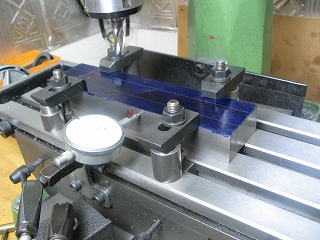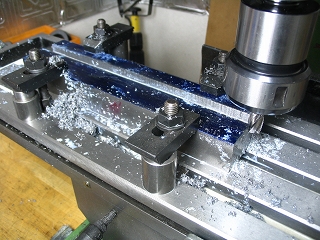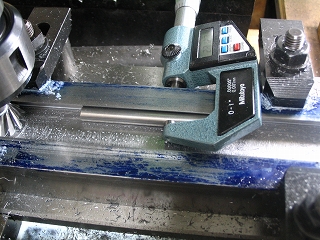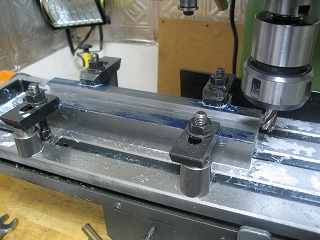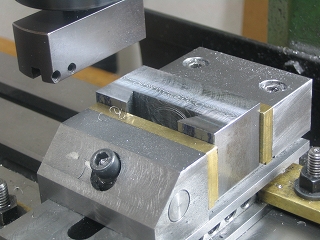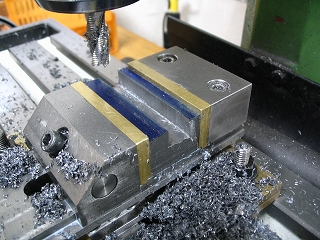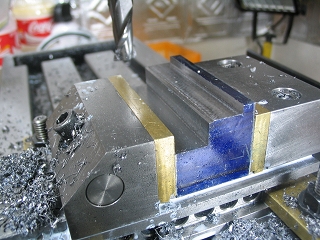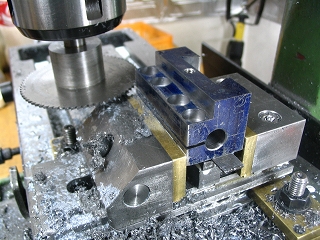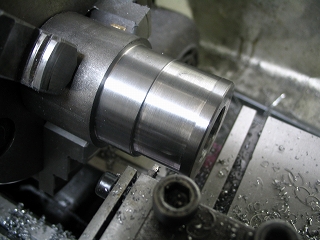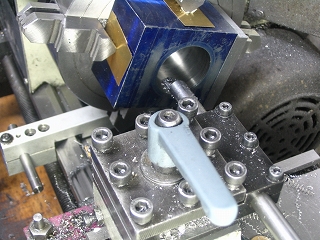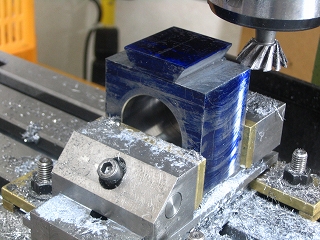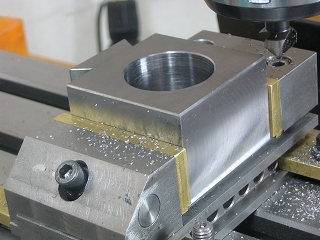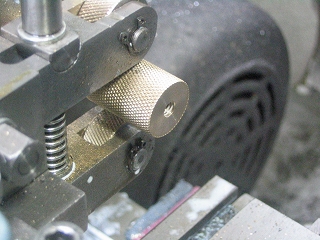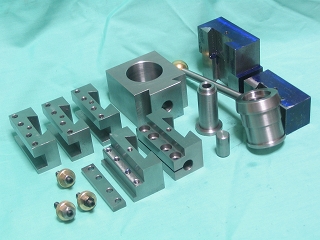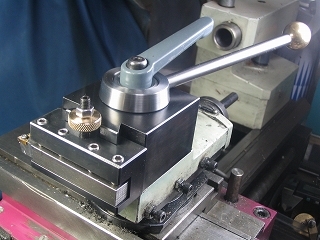|
QUICK CHANGE TOOL POST My lathe came with a four-way tool post and I wanted to convert to a "quick change" system. Quick change systems are commercially available, but I decided to make my own, modeled after commercial designs. Quick change system consists of a Quick Change Tool Post, QCTP and Quick Chance Tool Holders, QCTHs. Commonly, a number of QCTHs are dedicated to hold a particular bit. Any QCTH can be mounted on the QCTP. The below photographs start with a making of a variety of Quick Change Tool Holders, followed by the making of a Quick Change Tool Post. Design goals - The QCTP shall easily replace the four-way tool post. A wide range of cutting tools shall be accommodated, including parting tools and boring bars. The design shall be robust and secure. Once set up, no adjustments shall be required. |
 |
